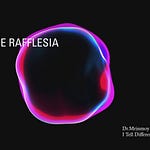To be continued.
Who are you? (AD)
You may also like :
You can find me on Instagram / YouTube / Listly / Tumblr
I Tell Differently may receive affiliate commissions from some of the links given above. All the commissions will be deposited to NGOs and NPOs after the deduction of the honorariums, maintenance, and taxes for running this site.
Do you know after one week this post will be inaccessible to free members?
Upgrade now and access all the posts made in this newsletter as long as you remain a paid member.
The monthly paid membership is only Rs.51/=. However, you can get it for 10% off for one year. This indicates that you can become a paid member for the upcoming year for Rs. 46/= pm(approx), which is a clear savings of Rs. 100. Click the following link or push the button below:
Transcript of the Podcast
(00:00:01):
The Blue Rafflesia Part 21 The Journey Until Part 20,
(00:00:10):
we have discussed how Professor Vattachachi discovered a connection between the
(00:00:16):
rare blue rafflesia species and the presence of uranium.
(00:00:24):
A team of confidants was chosen to unravel this mystery
(00:00:30):
visiting the restricted North Sentinelese Island.
(00:00:36):
The story goes on.
(00:00:40):
Part 21.
(00:00:42):
The Journey The first instances of Brule Lafresia was spotted in Andaman and Nicobar Islands.
(00:00:53):
Correct, Jayanta?
(00:00:55):
Professor Vattachachi was looking at Jayanta for confirmation.
(00:00:59):
Jayanta was focused on his laptop, waiting for a message from Anjali.
(00:01:04):
However,
(00:01:05):
the spiral in this facility was difficult to bypass,
(00:01:09):
and messages from unverified phone numbers were automatically rejected.
(00:01:18):
Jayanta jumped at his professor's inquiry and nodded in agreement,
(00:01:23):
but he didn't give much thought to the question asked.
(00:01:28):
However, the professor continues his speech.
(00:01:33):
If my hypothesis is correct,
(00:01:35):
then the presence of nuclear energy in the Andaman and Nicobar island is certain.
(00:01:41):
However,
(00:01:42):
the issue is that the location where the flower was found is within the restricted
(00:01:47):
area of North Sentinel iodide.
(00:01:52):
Where the Sentinelese tribal
(00:01:54):
or tribes besides.
(00:01:56):
As you know, they are known to be highly dangerous and can attack without any provocation.
(00:02:04):
The Indian government also restricts both outsiders and islanders from visiting the island,
(00:02:11):
not only the island,
(00:02:13):
but also within the 4 km radius of the island.
(00:02:18):
As you know, the Andaman Nikobar Islands are a group of islands situated in the Bay of Bengal,
(00:02:26):
They are known for their pristine bridges, rich biodiversity and unique indigenous cultures.
(00:02:34):
Comprising a total of 572 islands,
(00:02:37):
this archipelago provides an ideal combination of adventure and relaxation for
(00:02:43):
travelers seeking a tropical paradise gateway.
(00:02:48):
But it is important to note that the Andaman and Nicobar Islands are home to several indigenous tribes.
(00:02:57):
These tribes have inhabited the island for centuries,
(00:03:01):
preserving their traditional way of life,
(00:03:05):
despite modern developments.
(00:03:09):
One example of these indigenous tribes is the Sentinelese,
(00:03:14):
who are known for their isolation and hostility towards outsiders.
(00:03:19):
Despite this, their existence serves as a reminder
(00:03:24):
of the rich cultural history present on the islands,
(00:03:29):
making for a truly unforgettable experience for visitors.
(00:03:34):
However, as you know, no visitors are allowed in this island.
(00:03:40):
You can, of course, watch the island, but from a distance, at least 4 km away.
(00:03:51):
Another example is the Jarwa tribe.
(00:03:54):
who are known for their unique language and hunting skills.
(00:03:58):
Visitors have the opportunity to learn about their traditional practices and
(00:04:02):
witness their way of life firsthand,
(00:04:05):
providing a glimpse into a culture that has remained largely untouched by modern society.
(00:04:12):
This Jarwar tribe is nowadays quite friendly.
(00:04:16):
They do not attack you unprovocatively.
(00:04:19):
They accept your gifts.
(00:04:21):
like coconut, biscuits, clothes, all these things.
(00:04:26):
But Indian government tries to keep them at an isolation to preserve their originality.
(00:04:35):
Because nowadays,
(00:04:36):
due to the advent of modern technologies,
(00:04:39):
most of the indigenous tribe of Indian subcontinent is slowly but steadily
(00:04:46):
vanishing or mingling with the
(00:04:52):
non-tribe people.
(00:04:54):
There is no harm in it.
(00:04:56):
But to maintain the indigenousness of the tribes,
(00:05:03):
we must conserve the ancient cultures of the tribe as much as we can.
(00:05:11):
Now,
(00:05:12):
you know,
(00:05:12):
the Sentinelese tribe residing on North Central Ireland has maintained their
(00:05:17):
traditional way of life for thousands of years.
(00:05:20):
resisting outside influence and contact.
(00:05:24):
Similarly,
(00:05:24):
the Jarva tribe of South Andaman Island continues to practice hunting and gathering
(00:05:29):
techniques that have been passed down for generations,
(00:05:32):
offering visitors a rare glimpse into a way of life that has remained unchanged for centuries.
(00:05:40):
But as I told you,
(00:05:41):
the North-Sentinel Island,
(00:05:44):
where the first picture of Peer of Lesha was captured,
(00:05:48):
is off-limits to visitors.
(00:05:51):
The island is home to the centenaries,
(00:05:54):
an isolated indigenous tribe that has chosen to remain secluded from the modern world.
(00:06:01):
The Indian government has imposed restrictions to protect the tribe from diseases
(00:06:07):
they have no immunity to,
(00:06:10):
and to protect outsiders from the tribe.
(00:06:14):
The Andaman and Nicobar Islands Protection of Aboriginal Tribes Act
(00:06:19):
of 1956 prohibits travel within 5 nautical miles or 9.3 km of the islands.
(00:06:27):
Constant armed patrols prevent outsiders from entering.
(00:06:31):
But,
(00:06:32):
as is the case in everywhere,
(00:06:35):
you are ultimately allowed to visit within 4 km of the island,
(00:06:42):
not 9.3 km,
(00:06:44):
as the Act suggested.
(00:06:48):
Now, why these tribes are very dangerous?
(00:06:52):
In recent years,
(00:06:56):
as recent as 2018,
(00:06:58):
an American named John Allen Chow was killed while visiting the island illegally as
(00:07:06):
a Christian missionary.
(00:07:10):
In 2006 also,
(00:07:10):
two Indian fishermen were killed by the tribe after their boat inadvertently
(00:07:15):
dripped onto the island.
(00:07:18):
So they are totally hostile towards outsiders.
(00:07:22):
Either it is Indian or it is foreigner.
(00:07:24):
Doesn't matter.
(00:07:25):
If you go near to them, they will kill you.
(00:07:28):
And they use bow and arrow for this.
(00:07:31):
And in the tip of the bow, they apply a poison which is available only in their forest.
(00:07:40):
That is the forest of the North Sentinel Island.
(00:07:44):
So they
(00:07:45):
Apply that poison in the tip of the bow and they threw the arrow or fired the arrow towards you.
(00:07:52):
One touch of the arrow, you are done for.
(00:07:57):
No one can save you.
(00:07:59):
But on the other hand,
(00:08:00):
the Jarawa tribe sleeps on the western coast of the Middle and South Andaman Islands.
(00:08:05):
The Jarawa tribes are also nomadic hunter-gatherers who subsist on a traditional
(00:08:11):
diet of white wood,
(00:08:12):
turtles,
(00:08:13):
crabs,
(00:08:13):
fish,
(00:08:14):
fruits,
(00:08:14):
etc.
(00:08:15):
Initially, they are also hostile to the outsiders.
(00:08:18):
However,
(00:08:19):
the first friendly contact was met in the year of 1974,
(00:08:23):
and since then the Jarvas are not hostile to the contact team,
(00:08:28):
which goes to give them coconut,
(00:08:32):
banana and other fruits.
(00:08:35):
But they continue their indigenous way of hunting and gathering fruits.
(00:08:40):
They hunt wild pigs.
(00:08:42):
monitored with lizards, with their bows and arrows, but they do not kill anybody, any human being.
(00:08:50):
Generally, they do not kill.
(00:08:52):
And although Indian Supreme Court in 2002 ordered that the highway through the
(00:08:58):
Jarawa Reserve,
(00:08:59):
there is a highway to the Jarawa Reserve Forest,
(00:09:02):
that should be closed.
(00:09:03):
The Supreme Court had ordered in the year of 2002,
(00:09:06):
but it remains open and tourists use it as human sufferings to the Jarawa.
(00:09:12):
And what it results is,
(00:09:15):
the diseases of the outsiders are infected with those diseases and they are not
(00:09:23):
immune to it and they do not have adequate medical supply also.
(00:09:28):
So such type of disease can kill and even wipe the tribe out.
(00:09:34):
So we must preserve these tribes to preserve our culture.
(00:09:41):
But the point is,
(00:09:42):
you can handshake with the Jarawa tribes now,
(00:09:44):
but never ever do the same with sentinel's people,
(00:09:47):
said the professor.
(00:09:49):
Then the questions come from the most patient and sincere listener among the crowd
(00:09:56):
of seven people,
(00:09:57):
Professor Bashu,
(00:09:59):
the nuclear scientist.
(00:10:01):
We have introduced this fellow in the last part.
(00:10:06):
Yes, Mr. Patanayak and Mr. Bakshi, would you like to add something here?
(00:10:12):
where queried the professor.
(00:10:15):
Both Bhokshi and Patanag were also listening to the professor all this time and
(00:10:19):
they promptly replied to him,
(00:10:21):
although access to the island is restricted for general public.
(00:10:26):
It is not for us.
(00:10:27):
We are undertaking a mission from the Indian government with both RAW and IBE providing support.
(00:10:34):
Therefore, entering the island will not be an issue.
(00:10:37):
However, we must maintain strict confidentiality.
(00:10:40):
Under no circumstances should anyone outside of this team be informed about our visit.
(00:10:47):
It must remain confidential and not even our family or friends should know about this mission.
(00:10:54):
If any information is leaked, we will have to cancel our visit.
(00:10:58):
This will only postpone our nation's energy independence.
(00:11:02):
Professor interrupts emotionally.
(00:11:06):
Don't worry about the secrecy of the project.
(00:11:08):
We are experts in maintaining confidentiality.
(00:11:10):
However, please share the plan.
(00:11:12):
How do we reach there?
(00:11:14):
Where will we assemble in Andaman, Nicobar?
(00:11:17):
How will the journey start from the Andaman Islands to the North Sentinel Island?
(00:11:22):
Rohit inquired impatiently.
(00:11:26):
Yes, Rohit, here is the plan.
(00:11:28):
We will be traveling to Andaman Islands tomorrow.
(00:11:31):
But we will be divided into three groups.
(00:11:34):
In one group,
(00:11:36):
You, Raj and Dr. Gumej will fly from Delhi to the Andaman Islands as tourists.
(00:11:43):
Your seats are already reserved.
(00:11:46):
Jayanta and Bhubaj will depart by ship from Kolkata port the day after tomorrow.
(00:11:52):
Bhubaj can bring his instruments with him on the ship.
(00:11:55):
As you know,
(00:11:56):
Bhubaj is the person in charge of the remote sensing operation of the project,
(00:12:02):
which will be extremely important.
(00:12:04):
because they are there, they are going there to find blue-life inertia.
(00:12:10):
And nowadays,
(00:12:11):
satellite imageries or remotely sensed imageries are highly useful in detecting
(00:12:17):
such type of plant species.
(00:12:21):
They will be part of our research team exploring the biodiversity of one of the
(00:12:25):
islands in the Andaman and Nicobar Islands,
(00:12:28):
which is submerging into the Indian Ocean due to the impacts of climate change.
(00:12:33):
Bakshi and Patnai will assist them as security officers.
(00:12:38):
And Professor Basu and I will travel there by a reserved steamer from Puduchiri five days from now.
(00:12:47):
We will disguise ourselves as a member of a team from the Institute of Oceanography, Chennai.
(00:12:54):
Professor Basu.
(00:12:56):
So that much for part 21.
(00:13:05):
And in the next part, the journey will be started.
(00:13:13):
And how they reach Andhava Nikubara Island and what happens after then will be discussed.
(00:13:20):
So if you like the story up to this part,
(00:13:26):
then please subscribe or share this newsletter so that I feel encouraged to
(00:13:36):
Create the next part.
(00:13:40):
Thank you for your patient listening of this, of the audio version of this story.
(00:13:50):
See you in part 22.














Share this post